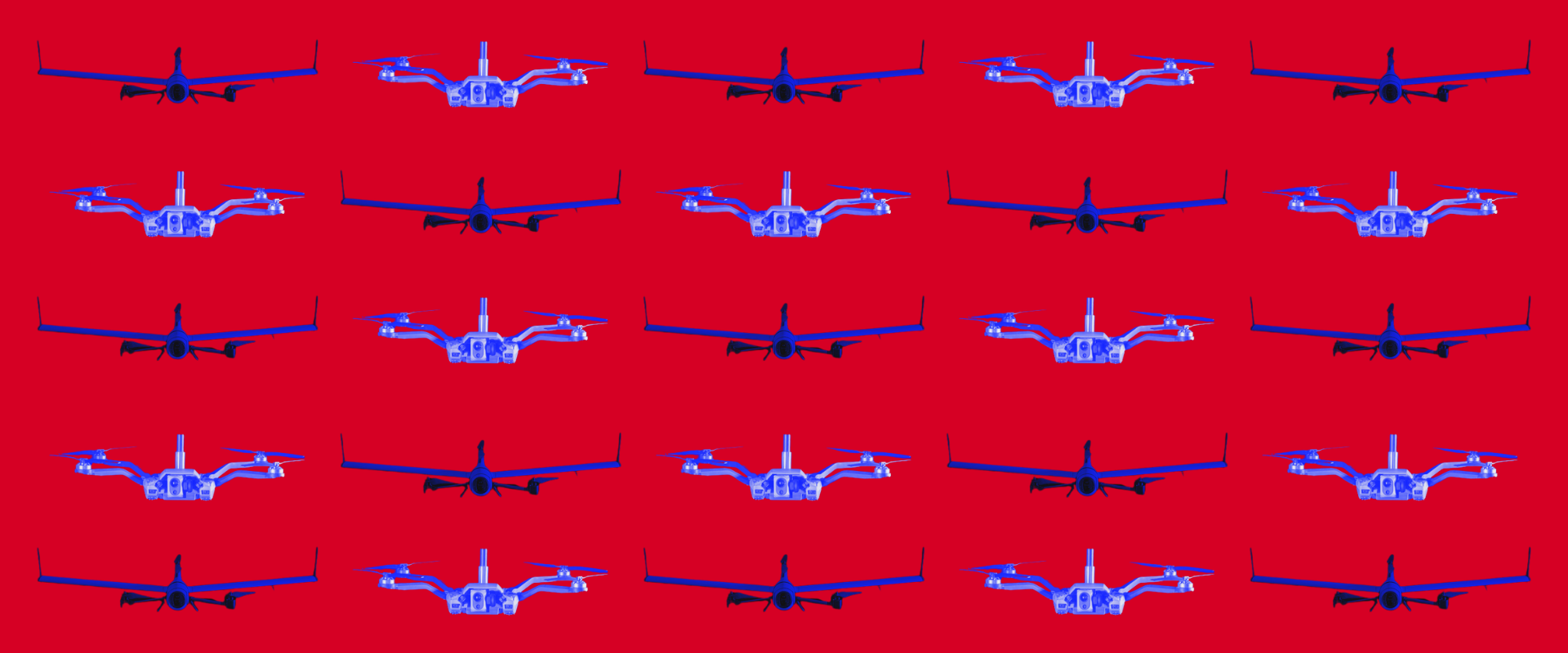
April 15, 2025
Q&A: Where Drones Are Taking American Defense with Brendan Stewart, Vice President of Regulatory Affairs at Red Cat Holdings
Red Cat Holdings is a U.S.-based drone technology company integrating robotic hardware and software to provide critical situational awareness and actionable intelligence for military, government, and commercial operations. Brendan Stewart, the company’s Vice President of Regulatory Affairs, is a leading aviation compliance expert specializing in unmanned systems, training, and safety. He was instrumental in securing some of the earliest FAA waivers for drone operations over people and urban deliveries.
Data Catalyst Institute: The defense technology landscape is undergoing a remarkable transformation driven by agile, forward-thinking companies. How has Red Cat’s experience in the commercial and recreational drone sectors shaped your approach to defense technology, and what competitive advantages do you bring to the national security sector?

Brendan Stewart: If you look around the aerospace and defense industry, you’ll find only a handful of pure defense players. America has a long history of commercializing defense technology to become a ubiquitous aspect of American life. To this day, Boeing builds transport-category aircraft. Raytheon pioneered microwave ovens in the 1950s. Texas Instruments makes missile guidance systems and the graphing calculator many of us remember from high school algebra. Honeywell and General Electric make household appliances; even Textron makes EZ-Go golf carts.
Red Cat continues this proud American tradition of using defense development to create the future. We’re building the next generation of drones for the American military, which will become the future standard for enterprise users. Enterprise adoption drives scale, reduces cost, and shortens the innovation curve for future defense tech. This positive feedback loop is fundamental to providing warfighters with the best available solution.
DCI: Red Cat recently received FAA approval to operate Remote ID-exempt drone flights in U.S. airspace, highlighting your commitment to regulatory compliance and advancing drone research domestically. Against that backdrop, what regulatory trends or issues is Red Cat watching in 2025, and where do you see opportunities for industry engagement in shaping domestic policy?
BS: I’m a pilot and aircraft owner myself, so I take our company’s safe and lawful integration into the national airspace system as a point of personal interest. Fundamentally, we believe that aviation should be regulated as one analog continuum of operations stretching from the highest risk and complexity operations in the National Airspace System, such as scheduled airline and cargo operations of transport category aircraft, down to the lowest risk, lowest complexity operations, like Part 103 ultralights and recreational drones. With that vision, my interest is driving regulation that helps to unify the framework and reduce costly and complicated one-off approvals, like waivers and exemptions.
I’m particularly excited about the forthcoming Part 108 rulemaking, which will standardize a process for beyond visual line of sight (BVLOS) drone operations by rule rather than by a series of nonstandard one-off waivers to BVLOS operating prohibitions in Part 107. Additionally, the Modernization of Special Airworthiness Certificates (MOSAIC) rule will standardize requirements across both the manned and unmanned spectrum of operations, reducing certification costs significantly, and will improve the ability of manufacturers across the risk/complexity continuum to provide market-viable solutions that drive the entire industry forward.
DCI: U.S. lawmakers have proposed legislation that would ban Chinese drones from the U.S. market due to concerns about espionage and unfair competition. This legislation would also authorize DOT grants for local and state law enforcement to purchase drones from U.S. and other trusted companies. How might these policies impact Red Cat’s business strategy and operations, particularly concerning sourcing and competition?
BS: I firmly believe that an exclusionary policy landscape, if implemented, must be supplemented by significant investments in closing the capability and cost gap with China. It’s important to recognize that the Chinese Unmanned Aircraft Systems (UAS) market we see today is not an outgrowth of a free market. Rather, it is the result of decades of targeted industrial policy by the CCP to drive down costs and flood the international market with cheap, high-quality drones.
The result of this is a critical user base dangerously dependent on an adversarial supply chain. Even setting aside cyber espionage concerns entirely, the reality remains that critical state and local public safety agencies, infrastructure owners, and power utilities are wholly dependent on Chinese drones. This is rightfully a major concern for policymakers. Think back to the early days of the Covid pandemic. America didn’t control manufacturing the most basic medical supplies like masks, gloves, and hand sanitizer. With Chinese manufacturing shutting down, these critical supply lines instantly became disrupted, and it became exponentially more difficult to protect Americans against a spreading pandemic.
What happens to your local fire department’s drone program in an escalating trade war with China? The Trump administration’s recent tariff announcements are the US government’s clearest signal in decades that they consider Taiwan an independent nation. Could Chinese state-backed drone Original Equipment Manufacturers (OEMs) curtail online services like firmware updates? Could tariffs and trade sanctions massively reduce the supply of spare parts? Absolutely. Drone programs in critical applications need to anticipate and prepare for this reality.
Exclusionary policy is often an easy layup in the American political climate. The market fundamentalist worldview that has guided both parties’ policymaking over the past four decades makes it difficult to imagine what American industrial policy would look like, but exclusionary policy tied with generous grant programs to close the cost gap is a good, albeit likely insufficient, first step.
There’s no law of nature that predisposes UAS manufacturing to Chinese dominance. It’s the simple result of decades of major investment in capabilities. America can and should make comparable investments to regain a competitive position on the global stage. We simply can’t afford not to.
DCI: As unmanned systems play an expanding role in modern conflicts—including Ukraine—and as concerns grow about NATO’s preparedness for drone warfare, how does Red Cat envision its role in shaping the use of armed drones across military, law enforcement, and intelligence operations while addressing ethical and legal considerations?
BS: Among the core lessons of the conflict in Ukraine is that small unit-portable drones have fundamentally changed the nature of warfare. Perhaps as significant as the proliferation of the machine gun a century ago. Small unit tactics are likely to never be the same.
The basic Intelligence, Surveillance, and Reconnaissance (ISR-only) drones of the Global War on Terror era have become obsolete within a decade. Now, drones are fully integrated into every aspect of the kill chain. Target acquisition, identification, and the ability to call additional assets or strike directly are on the table.
We see the same discovery of need playing out in the enterprise and public safety space. A local Police Department implementing a Drone as First Responder (DFR) program likely needs different drones to run wide-area overwatch than a model designed for indoor tactical operations.
This is the fundamental thesis of Red Cat’s “Family of Systems” approach. Multiple specialized platforms, each with a different mission set and purpose, are networked into the same backend, and controlled by the same universal interface. There is no “universal” drone for every mission, but there can and should be a universal command, control, and AI platform that connects all aspects of the mission. We at Red Cat are determined to make that a reality.
DCI: During his March 4th congressional address, President Trump proposed the development of a “Golden Dome” national defense system inspired by Israel’s “Iron Dome.” How could the development of this infrastructure impact Red Cat, and what opportunities or challenges might arise for your company in contributing to or integrating with this type of system?
BS: American defense development has a long history of creating what become ubiquitous technologies in the future. NAVSTAR, a parochial satellite program to locate navy ships more accurately became GPS thirty years later. Now, virtually every American uses it at no cost. Defense development initiatives are a key mechanism by which the US government invests in the development and marketability of next-generation technologies, often standing in for more robust industrial policies of peer nations.
Defense and commercial drones often use similar navigation components to interceptor missiles in missile defense systems like Iron Dome. A greater domestic demand signal would drive those components to be produced at a greater scale, lower costs, and improve the innovation cycle for new technologies. This, in turn, would drive the innovation cycle for small UAS domestically, likely reducing costs, improving scale, and providing more robust solutions and greater value to the warfighter and enterprise user.
For a PDF version of this Q&A, please see here.

